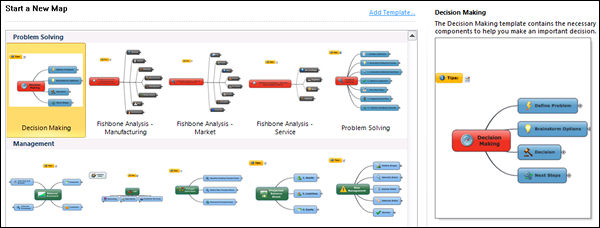#11 in the Effective Mind Maps blog post series
Most of us have activities that we do on a regular basis – meetings, plans, reports and more – where we need to quickly organize, distill and utilize information in a productive way. Why not speed these repetitive tasks by creating mind map templates to “automate” their production and improve your productivity?
A well-designed template gives you a “starting point” or framework with the major topics already created, which spurs your associative brain into action. It also saves you time, because you’re not creating the same map from scratch each time you do that activity.
If you’re not convinced that mind map templates will save you time, simply multiply the number of times you do a given task during an average week by the amount of time that it takes you to create such a mind map. Let’s look at an example: You have 10 meetings a week; on average, it takes you 30 minutes to create a meeting map that incorporates the meeting objectives, participants, agenda, support materials and meeting room arrangements. That’s a savings of 5 hours in a week – pretty impressive!
Types of maps that lend themselves to a templated approach include:
- To do lists
- Meeting planning and management
- Project management
- Group brainstorming (using methodologies like Edward de Bono’s Six Thinking Hats)
- Decision making
- Job descriptions
- Performance reviews
- Packing list for business trips
Most mind mapping tools enable you to create a map and then designate it as a template, so you can re-use it later. That’s a real time-saver that many users of mind mapping tools tend to overlook. Why start from scratch each time you need to work with a mind map? Create a set of “starting points” that are tailored to the way you work, and you’ll see your productivity soar.



Leave a Reply